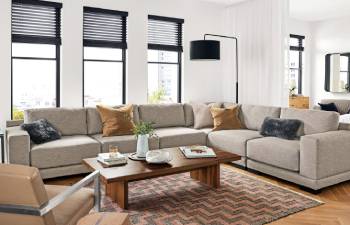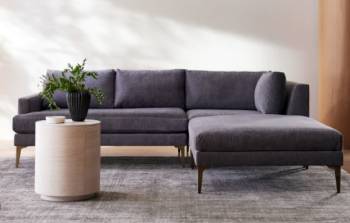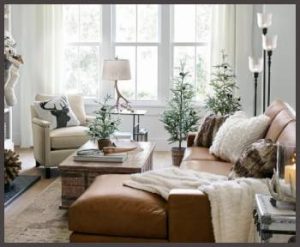As the saying goes, home is where the heart is, and nothing amplifies the heart’s pulse like a beautifully furnished interior. In the quest for interior elegance, two names often come up in conversations – Room & Board and West Elm. Both companies offer spectacular furnishing options, but they’re as different as chalk and cheese in various aspects.
Today, we will dig into the nitty-gritty of these two furnishing giants, dissecting their pros and cons, and answering some frequently asked questions.
A Brief Comparison Table
| Room & Board | West Elm | |
| Style | Modern, minimalist | Contemporary, eclectic |
| Quality | High (with focus on durability and construction) | Good, but some concerns over durability |
| Price | Higher end | More affordable |
| Origin | Mostly made in the USA | Varied origin |
| Sustainability | Strong focus on sustainable and eco-friendly practices | Limited sustainability initiatives |
| Design Variety | Limited to modern and minimalist styles | Wide range of styles, including trendy and boho designs |
| Community Impact | Not as prominent | Collaborations with local artists and artisans |
| Customer Service | Generally positive feedback | Some criticism, particularly on delivery and product issues |
Remember that this table represents a general comparison. Individual experiences with these brands may vary.
Room & Board: Upscale Simplicity

Room & Board is like the reserved, sophisticated sibling in the world of furniture, priding itself on offering high-quality products crafted with timeless design principles. This brand leans towards a clean, minimalist aesthetic – a modern interpretation of classic American design.
Pros of Room & Board
- Quality and Durability
The brand is well known for its premium quality materials and excellent craftsmanship. Room & Board ensures durability by using robust, time-tested construction techniques.
- Sustainability
Room & Board goes the extra mile to source materials ethically, implementing eco-friendly practices and even selling a range of sustainably produced furniture.
- Made in the USA
Most of the company’s products are made in the USA, supporting local manufacturers and ensuring rigorous quality control.
Cons of Room & Board
- Price
The brand’s commitment to quality and sustainability often translates into higher prices, which can be a turn-off for budget-conscious shoppers.
- Limited Styles
Room & Board’s design philosophy leans towards minimalism and modernism. While these styles are popular, the brand might not cater to those looking for more traditional or eclectic pieces.
Read More: About Huntington House Furniture
West Elm: The Trendy Maven

West Elm is like the stylish, hip cousin of Room & Board, bringing a fresh, dynamic approach to furniture design. Known for its trendy, contemporary designs, West Elm is a favorite among millennials and those seeking a bit of flair in their interiors.
Pros of West Elm
- Design Variety
West Elm is a trendsetter, offering a wider range of styles, including mid-century modern, boho, industrial, and more. It’s an excellent choice for those who like to experiment with their interior décor.
- Affordability
West Elm is generally more affordable than Room & Board, making it a more accessible choice for younger homeowners or renters.
- Community Impact
West Elm is known for its collaborations with local artists and artisans, fostering community ties and creating unique, handcrafted pieces.
Cons of West Elm
- Quality Concerns
Some customers have expressed concerns about the longevity and durability of West Elm products, particularly upholstered items.
- Customer Service
West Elm has faced some criticism for its customer service, particularly regarding delivery and product issues.
Frequently Asked Questions (FAQs)
While West Elm offers stylish and trendy furniture, some customers have raised concerns about the longevity and durability of their products.
Generally, Pottery Barn tends to be more expensive than West Elm, but prices can vary depending on the specific product and collection.
West Elm is known for its contemporary, trendy designs with a particular emphasis on mid-century modern and bohemian styles.
West Elm is famous for its trendy designs, collaborations with local artisans, and a broad range of styles that cater to the evolving tastes of modern customers.
Amazon’s Rivet brand is often compared to West Elm. Rivet offers stylish, modern furniture at affordable prices, much like West Elm. However, remember that each brand has its unique offerings.
West Elm is a brand owned by Williams-Sonoma, Inc. While they fall under the same parent company, they target different market segments with distinct design aesthetics.
Read More: About Differences Between Jordan’s Furniture And Bernie & Phyl’s Furniture
Conclusion: Room & Board vs West Elm
In the end, the choice between Room & Board and West Elm boils down to individual preferences, budget, and lifestyle needs. If you’re drawn to high-quality, minimalist design, and sustainability is a priority, Room & Board might be your match. On the other hand, if you’re after trendy, contemporary styles at an affordable price, West Elm could be your go-to brand.
Remember, a well-furnished home is not merely a showcase of good taste, but a reflection of the self. Whether it’s the classy vibe of Room & Board or the eclectic charm of West Elm, let your home echo your personality. Happy furnishing!



